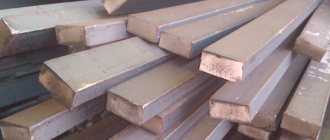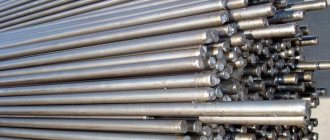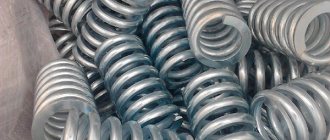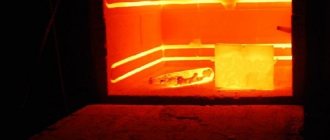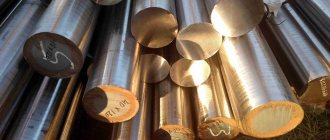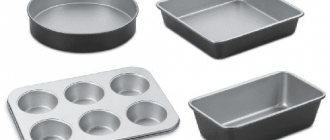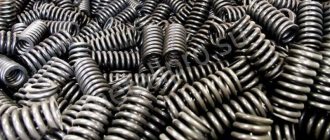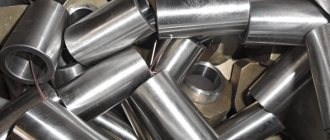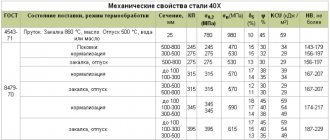The metallurgical industry is one of the most important components of each country's GDP; it also produces unique and useful materials. Humanity could not survive without the products produced by metallurgical plants. Steel is one of them. There are different types of this material that are used in many industries. Steel, which has high ductility and wear rate, also known as Hadfield steel, is a unique alloy. The requirements for it are regulated by GOST 977-88 and foreign analogues (USA, England, Germany, China, Japan, Finland, Spain, Korea).
History of Hadfield steel
Based on the name, it can be argued that it was Robert Hadfield who obtained this alloy. Who was this developer? Robert Hadfield was an English metallurgist who developed an alloy with increased strength in 1882. Quite quickly, this steel became widespread and turned out to be a very unique material.
After Hadfield developed a unique steel, the military became interested in his development. This is not surprising, since such an alloy is an integral component for creating protective equipment for the military.
Heavy-Duty Infantry Helmets are the first protective equipment based on Hadfield steel. Similar helmets were used by soldiers of the British army, then the US military became interested in the development and began their production. Until the 80s, Hadfield steel technology did not change. But since the 80s, organoplastic was developed, which was not inferior in strength to the material developed by the British metallurgist, but was much lighter.
Infantry helmets are not the only use for Hadfield steel. The British were the first to use this high-quality steel for other purposes. Crawler tank tracks began to be produced from Hadfield alloy in the 20s. Steel increased the mileage of tank tracks from 500 to 4,800 kilometers. During the First World War, such an increase in mileage was considered almost a miracle. Hadfield steel became indispensable for tank building. Soon this alloy was used not only in tank building, but also in other industries. In the USSR, Hadfield steel began to be smelted in 1936.
Alloying
Alloying is a change in the composition of steel using a calculated amount of auxiliary elements, impurities, to give it certain physical qualities. Among the most commonly used alloying components are:
All these additives have different effects on the final qualities of the resulting alloy. Before purposefully adding alloying components to metal, people became acquainted with natural alloyed alloys that literally fell from the sky in the form of iron meteorites. This iron has been used for a long time. It contains up to 8.5% nickel, an alloying element actively used today.
This type of steel was invented in 1882 by the English metallurgist Robert Hadfield (he was accepted as an honorary member of the USSR Academy of Sciences in 1933). This is a highly ductile steel with a high manganese content. This brand of steel turned out to be so successful that even now, with virtually no changes in the chemical composition, it is widely used in a wide variety of industries. In the USSR, the technology for smelting this steel was mastered by 1936. In Russia and among member countries of the Commonwealth of Independent States, it is known under the brand name 110G13L (or G13L). The letter “L” means that this steel is for casting. The requirements are regulated by GOST 977-88 and its analogues abroad.
Hadfield steel: composition
| Chemical composition | |||||
| Element (periodic table) | Fe | C | Mn | Si | Other impurities |
| Content, % | 82 | 1 | 12 | 1 | 4 |
By analyzing the chemical composition, especially the percentage of carbon and manganese, it can be seen that this is an austenitic steel. This structure increases wear resistance and strengthens the alloy. Thus, steel is resistant to deformation processes, possessing a high degree of ductility and impact toughness. Metallurgists claim that this alloy was the first alloy steel to be mass produced.
Austenitic high manganese steel
The chemical composition of the metal also has a great influence on the manufacturability of 110G13L steel, especially in the manufacture of thin-walled castings. An empirical formula has been proposed for determining the manufacturability coefficient Kt, which characterizes the concentration dependence of the fluidity of 110G13L steel:
Kt = % C+ + + + .
With increasing composition of steel 110G13L (0 ≤ Kt ≤ 1.2), fluidity increases.
Tendency to form hot cracks. It is believed that this disadvantage inherent in 110G13L steel is associated with low mechanical properties at high temperatures, a large value of its linear shrinkage coefficient, reaching 2.8¸3%, reduced thermal conductivity, increased sensitivity to overheating during pouring and stress concentration in parts of the castings that have sharp transitions, high tendency to burn. The latter property, due to the chemical activity of liquid steel in relation to acidic refractories and molding materials, leads to a change in the composition of the surface layers of castings (decarburization, depletion in manganese and enrichment in silicon).
The main type of defects in high-manganese castings are hot and cold cracks. They can take the form of tears, be through or non-through, of varying depth, shape and length. The cracking of steel type 110G13L is significantly influenced by various factors: chemical composition (especially the content of phosphorus, manganese, carbon and silicon), degree of deoxidation, temperature and speed of casting into molds, quantity, nature, shape and nature of the arrangement of non-metallic inclusions, crystallization conditions, size austenite grain, temperature of castings at the time of their knocking out of molds, heat treatment mode, etc.
Often, cracks in castings appear when they are prematurely knocked out of molds as a result of a sharp temperature difference between the castings and the environment. In this case, large internal stresses arise in the castings due to the low thermal conductivity of high-manganese steel and significant linear expansion. R.Z. Katz proposed to carry out knockout only after the temperature of the hottest sections drops to 400 °C, which would reduce defects in cracks in the cores of railway crosses by more than three times.
On average, the cooling time of high-manganese castings should be 2.0–2.5 times longer than for cooling of carbon steel castings of approximately equal mass, degree of complexity and thickness.
Removal of profits and feeders by fire cutting should be done before the final heat treatment of the castings. When the thickness of the castings is no more than 40 mm, it is allowed to cut off the profits and feeders after hardening.
Welding of castings made of steel 110G13L in a hardened state is carried out with electrodes made of steel type 110G13L, but with a reduced concentration of carbon and 3% nickel (EI63), taking measures to reduce the heating of parts. Welding with electrodes made of steel 1Х18Н9Т is allowed, but the seam is more fragile. Sometimes worn parts are surfaced with wear-resistant alloys, but this requires a special selection of the surfacing mode to avoid the formation of cracks in the base metal at the interface with the deposited metal.
Due to the high tendency to work hardening, the machinability of 110G13L steel is very low and is performed with carbide tools. Cutting machinability noticeably improves as a result of tempering 110G13L steel in the temperature range of the maximum rate of austenite transformation (500–600 °C), to a greater extent, the more complete the decomposition of austenite occurs by the reaction γ → α + k. Cutting in a heated state to temperatures of 300–600 °C also makes it possible to significantly facilitate the process of mechanical processing of steel, however, even after short-term heating, which causes the decomposition of austenite, re-hardening will be required, which is not always possible.
Good results are obtained by electric spark, electroerosive and anodic-mechanical processing, which do not reduce the mechanical properties of the treated surface (the endurance limit after electric spark processing is slightly reduced).
Heat treatment of castings made of steel 110G13L. According to the section of the Fe–Mn–C ternary diagram at 13% Mn and 1% C (Fig. 4.3), crystallization of 100G13L steel during slow cooling begins at a temperature of about 1400 0C with the formation of austenite crystals with a carbon concentration of about 0.5%, and ends at a temperature of about 1280 0C with the formation of intercrystalline regions enriched in carbon (light areas in Fig. 4.4). Below a temperature of 850 0C, carbides (Fe, Mn)3C are released from austenite, primarily in carbon-enriched areas, i.e. along the boundaries of the formed grains, which pass both along the interaxial sections and along the axial parts of the dendrites. The preferred sites for the precipitation of carbides are the interaxial areas, regardless of whether they are located along the boundaries or inside the austenite grains. Below a temperature of 620 0C, with slow cooling, the decomposition of austenite into a ferrite-carbide mixture can develop with the formation of a troostite-sorbitol structure in areas depleted in manganese, i.e. in areas adjacent to previously released “hypereutectoid” carbides.
Rice. 4.3. Polythermal section of the Fe–Mn–C phase diagram at a manganese concentration of 13%
Rice. 4.4. Microstructure of cast steel 110G13L, x 200
G.I. Silman showed that already during the cooling process of the casting, a special two-phase component is formed in the structure of high-manganese steels, consisting of austenite and plates (or needles) of carbides and having a pearlite-like structure, i.e. in this case, austenite does not undergo the γ→α transformation.
Slowing down cooling in the temperature range 700–400 0C leads to the decomposition of austenite with the formation of carbides and the occurrence of increased brittleness of steel. According to the diagram of the isothermal decomposition of austenite in manganese steels (Fig. 4.5), phase transformations begin with the release of hypereutectoid carbides along the boundaries and inside austenite grains (at temperatures of 550-600 ° C after holding for several minutes), and then eutectoid decomposition of the γ-hard occurs solution (as a result of a 15-minute exposure at these temperatures). As a result of the nucleation of alternating plates of cementite and ferrite, as a rule, in the vicinity of hypereutectoid carbides, the growth of troostite sections begins. This transformation develops according to the diffusion mechanism usual for eutectoid decomposition and is accompanied by an increase in the amount of decomposition products - ferrite and cementite and an increase in volume. At the same time, decarburization of the γ-solid solution and diffusion of manganese into the carbide occurs, which, according to the authors, is confirmed by a decrease in the Curie point of cementite. The transformation of austenite in steel 110G13L in the temperature range 700¸400 0C occurs according to the scheme
γ (1.2% C) → γ + K (Fe, Mn)3C) → γ (0.05…0.15% C) + [α + K (Fe, Mn)3C) ], where α + K (Fe, Mn)3C) is a eutectoid.
As follows from Fig. 4.5, in order to prevent the release of excess carbides, their intensive cooling is necessary in the temperature range 700–400 0C, which is difficult to achieve, especially in the center of massive castings, due to the relatively low thermal conductivity of austenitic high-manganese steel. Therefore, for massive castings, it is important to maintain the Mn:C ratio ≥ 10, taking into account that increasing the carbon content reduces, and manganese increases, the resistance of supercooled austenite to the formation of carbides and eutectoid transformation.
Rice. 4.5. Diagram of isothermal decomposition of austenite in manganese steels:
1– 0.93% C; 12.02% Mn; 2 –1.25% C; 12.44% Mn; k – carbide; tr – troostitis
The microstructure of 110G13L steel in the hardened state and after cold plastic deformation is shown in Fig. 4.6, from which it can be seen that in the deformed state in the polyhedral grains of austenite, strain lines are evenly located in two or three mutually intersecting directions. Plastic deformation in manganese austenitic steel occurs by sliding along {111} planes, as well as by twinning (Fig. 4.6, b).
Rice. 4.6. Microstructure of steel 110G13L after quenching from 1050 0C in water (a) and cold plastic deformation by compression of 20% (b), x 200
The best combination of high service properties (the ability to be greatly strengthened under frictional influence and, accordingly, increased wear resistance of the working surface in combination with high impact strength of internal, load-bearing volumes) steel 110G13L exhibits only after normal hardening from 1050-1100 oC in running water, which forms the structure of a single-phase supersaturated austenite solid solution, preventing the precipitation of carbides.
According to the section of the ternary diagram Fe–C–13% Mn (Fig. 4.5), austenite as an equilibrium structure in steel with 1.25% C and 13% Mn exists above a temperature of 900 0C. Considering that the thermal conductivity of manganese austenitic steel containing 1.2% carbon and 12% manganese is 3.5 times less than carbon steel, in order to intensify diffusion processes, accelerate the complete dissolution of carbides and increase productivity during hardening under production conditions, austenitization is usually carried out at a temperature of 1050-1150 °C, followed by fixation of the austenite structure by rapid cooling in running cold water.
Taking into account the reduced thermal conductivity of 110G13L steel and its significant coefficient of linear expansion compared to carbon steels, heating of high-manganese castings for hardening should be carried out carefully, especially up to 700-750 °C. With accelerated heating (especially in the region of 500–700 °C), significant internal stresses arise in the metal, which contribute to the formation of cracks.
The temperature of the working space of thermal furnaces when cold castings made of steel 110G13L are loaded into them and the rate of heating them for hardening at different plants are different and are determined mainly by the mass of the charge, the thermal power of the furnace, the chemical composition of the metal of the castings, the thickness of the walls of these castings, as well as their size and complexity of the configuration. The total duration of heating for quenching is the sum of the heating time to the quenching temperature and the holding time at this temperature.
Loading of castings into a thermal furnace is usually carried out at a temperature of the furnace working area of 300–600 °C, depending on the wall thickness and mass of these castings. The holding time is usually 1.5-2.5 hours. The rate of heating of castings to the hardening temperature is limited only by the risk of cracks occurring in them and does not have a significant effect on the quality of the metal. Most technological instructions for heat treatment of high-manganese castings recommend heating up to 700 °C at a rate of no more than 50 °C/h. After the temperature has been equalized across the cross section of the casting, further heating (from 700 °C) can be carried out at a rate of 150 °C/h or even more.
There is information that castings (scoops and dredge visors) made of 110G13L steel, alloyed with molybdenum and chromium, are heated from 300 to 650 °C at a rate of 100-120 °C/h, followed by a three-hour hold. The duration of exposure of castings at the quenching temperature is determined by the thickness of their walls, depends mainly on the rate of dissolution of carbides in austenite and ranges from 1 to 8 hours. Carbides of different shapes and sizes during heating to the quenching temperature and subsequent holding at this temperature decompose in different ways . For example, rounded single carbides and carbides arranged in colonies dissolve much more slowly than small needle-shaped or rosette-shaped carbides. With an increase in the concentration of silicon in steel and the introduction of carbide-forming alloying elements into it, the solubility of carbides in austenite decreases significantly, which requires an increase in the heating temperature for quenching.
In order to speed up the process of obtaining a homogeneous austenitic structure, it is recommended to subject the castings to long-term exposure at a relatively low temperature (1000-1050 ° C) or to increase this temperature, reducing the duration of exposure. In practice, better results are obtained by increasing the quenching temperature rather than by increasing the holding time. The highest mechanical characteristics of 110G13L steel are achieved with a simultaneous increase in the quenching temperature and an increase in holding time, although no visible changes in the microstructure of the metal are observed.
S.E. Kondratyuk and O.G. Kasatkin believes that for every 25 mm of the casting cross-section, about 1 hour of exposure at the hardening temperature is required. Insufficient exposure often leads to incomplete dissolution of carbides, especially those located along the grain boundaries of the metal. Excessively long exposure at high temperatures (≥1100 °C) can lead to noticeable decarburization of the surface layer of castings and the formation of scale (Fig. 4.7).
Rice. 4.7. Dependence of the depth of the decarburized layer (h) and the thickness of the scale layer (l) on the duration of exposure τ in castings at the quenching temperature
With an increase in excess air for combustion of fuel in a thermal furnace, the thickness of the scale layer and the depth of the decarbonized layer increase. The decarbonized layer of castings not only wears out quickly, but also significantly complicates the process of their surface hardening during operation.
It is noted that even for large castings, exposure at a hardening temperature of 1100 °C should not exceed 1 hour due to the tendency of high-manganese steel to decarburize. P.F. Parasyuk recommends determining the holding time of high-manganese castings at the quenching temperature using the following empirical formula, depending on the wall thickness and carbon and silicon content in the metal:
B = 0.0165 δex.. [1.27(C + Si)],
where δex. – wall thickness of castings, mm.
The practice of producing castings from steel 110G13L at Uralmashzavod has shown that in order to guarantee the austenite structure during quenching, it is necessary to ensure that the temperature of the water in the quenching tank after immersing heated castings in it does not rise above 60 °C, otherwise, if the cooling rate in the metal is insufficient, only the precipitation of carbides and the formation of martensite can occur in areas depleted in carbon and manganese, but even pearlite can be obtained. When steel is cooled from 1050 °C at an insufficient rate, a significant amount of small carbides are often observed in the microstructure of such steel, which, if the magnification is not high enough, can look like thickened grain boundaries. The higher the temperature of the water in the quenching tank, the less depth the castings will be annealed. Water temperature (5-60 °C) with a large amount of it does not have a significant effect on the structure and impact strength of high-manganese steel. It is proposed to determine the hardening ability of water not only by its initial temperature and quantity per unit mass of the charge, but mainly by the absolute cooling rate during hardening. The average cooling rate of castings up to 200 mm thick, ensuring the production of an austenitic structure with fine grain boundaries, was mod. ECG-4 not less than 30 °C/min.
As a result of heating hardened steel to temperatures above 300 °C, aging processes of the supersaturated solid solution develop noticeably, which culminate in the precipitation of excess carbon in the form of cementite-type carbides (Fe, Mn)3C and the eutectoid decomposition of austenite depleted in carbon and manganese. These processes occur with maximum completeness in the temperature range of 450-800 oC and are accompanied by a change in the morphology of carbides, an increase in hardness to HB 400-450 (after tempering at a temperature of 550 oC) and a sharp drop in impact strength (up to 0.2-0.3 MJ/ m2). In this regard, castings made of steel 110G13L should not be operated above 300 °C in order to avoid failures from brittle fracture.
⇐ Previous22Next ⇒
Recommended pages:
Properties of Hadfield steel
Due to its properties, austenitic steel could not be processed with cutting tools, as it has high toughness. For the manufacture of products from this material, only casting can be used.
The Hadfield alloy has a high work hardening ability, which is significantly higher than that of similar steel alloys. Austenitic steel has low hardness, but also high wear resistance under impacts, high pressure and temperature changes. Based on these characteristics, we can say that the steel of the British metallurgist is suitable for working in aggressive environments.
Processing methods
Cold forming of metals is a well-known method of intentionally creating hardening. Typical technological processes for such metal processing are drawing, cold forging, rolling, pressing (extrusion). If you overdo the processing, the Hadfield steel part can fall apart due to increasing internal stresses that destroy it. Therefore, when processing, for example, a knife blade, which is recommended to be slightly beaten before final sharpening, or when beating a braid (and this is cold forging), you need to apply very light blows and be careful about the recoil from the hammer. As soon as it starts to bounce, it's time to stop hitting, otherwise the blade may crumble.
Due to the high viscosity of Hadfield steel, parts made from it practically cannot be processed with cutting tools. For mass production of products from this steel, only casting is suitable. Casting molds must be made very carefully so that the manufactured parts are not subjected to additional processing. After casting the product and solidifying the metal, the quality of the steel is quite low, since at the boundaries of austenite grains there are small inclusions of carbides, which easily form cracks between the grains and lead to rapid destruction. Turning is possible only with the use of high-speed steels with high heat resistance. That is, the tool, when high temperatures occur at the cutting edge, must maintain high hardness and resist wear.
Features of Hadfield steel welding technology
The thermal conductivity of austenite is significantly lower than that of other steels, 4-6 times. The coefficient of thermal expansion is several times greater than that of low-carbon steels - 1.9 times. These are very important characteristics of the metal, as they affect the possibility of cold cracks occurring in the temperature range.
There is a significant likelihood of hot cracks, which is associated with the casting shrinkage of the alloy, which is 1.6 times greater than the low-carbon metal. High temperature transforms the austenitic structure into a martensitic structure, which increases the risk of cracks in the area exposed to high temperatures.
Changing alloy properties
When a metal is subjected to mechanical stress, microscopic defects are formed in it - dislocations; if such impact continues, these defects begin to shift and interact. They form a new material structure that resists further plastic change in shape. This structure increases the metal's ability to resist applied forces, increases the material's yield strength and reduces its viscosity. This is very important for those metals and alloys that are not strengthened during heat treatment.
At room temperature, Hadfield steel is practically non-magnetic, but after cold deformation, magnetic properties appear. This phenomenon is accompanied by the appearance in the metal structure of dense slip planes of dislocations, which crush the grains into separate blocks. The discovery of Hadfield and Hopkinson was that tensile testing of a steel sample gave it weakly magnetic properties. The appearance of ferromagnetism shows that after this type of load, part of the metal passes into the a-iron state.
Areas of application of Hadfield steel
Due to its chemical composition, characteristics and features, austenite is used in many industries. Using steel products, you can be sure of their reliability and highest strength.
Wear-resistant steel is a fairly popular material. A huge number of industrial enterprises that produce high-strength products use Hadfield steel. The following products are made from this alloy:
- Engineering products.
- Tank caterpillar tracks.
- Tractors.
- Railway crosspieces.
- Turnouts capable of operating under severe shock loads and abrasion conditions.
- Prison bars on the windows.
- Crusher components.
Making prison bars from austenite is interesting. Many believe that this is a form of mockery of prisoners who are attempting to escape. According to the classics of the genre, many relatives bring hacksaws to prisoners, who, in the hope of freedom, begin to saw through window bars.
If ordinary metal is used, there is a possibility of escape. But Hadfield alloy is a wear-resistant steel that cannot be cut with a regular hacksaw. If you start sawing gratings made of Hadfield alloy, hardening of the surface begins, which entails hardening of the austenite. A hacksaw increases the hardness of the grating to that of a hacksaw or higher. Therefore, we can talk about the unreality of escape.
Application area
It is used to make parts of mechanisms, rail crosspieces, turnouts, cores for rolling pipes, caterpillar tracks, armor plates, parts of crushers, visors of dredging machines, all devices that require special resistance to wear at high pressures, shock loads and abrasion. Until the 1980s, it was used to make protective helmets for soldiers in the British and American armies. During the twentieth century, about 30 million of them were produced. These helmets are just one way Hadfield steel is used. In the 1920s, tracks for tanks began to be made from it - this is the part of the tracks that is subject to the greatest impact and abrasion when moving heavy vehicles. Made from this steel, they made it possible to increase the mileage of equipment without repairing tracks or replacing them by almost 10 times, from 500 km to 4800 km.
Hadfield steel is very important, it has become indispensable in the military industry and tank building. Over time, this type began to be used in other areas of activity.
Steel 110G13L
| Chemical composition | |||||||
| Element (periodic table) | Ni | C | Mn | Si | S | P | Cr |
| Content, % | Max. 1 | 0,9-1,5 | 11,5-15 | 0,3-1 | Max. 0.05 | Max. 0.12 | Max. 1 |
Steel grade 110G13L is alloyed, which is used for castings and has special properties. This steel has high wear resistance against impacts or pressure changes.
Composition and properties
The percentage chemical composition of Hadfield steel is:
- Fe - 82%,
- Mn - 11.5-15%,
- C - 0.9-1.6%,
- Si - 0.3-1%,
- other components - up to 5%.
With this percentage of manganese and carbon, the steel has an austenitic structure. It is this that gives the metal increased resistance to wear and a tendency to increase strength when the geometry of the original shape is violated as a result of an impact. Austenite is the structure of a metal that determines its technical characteristics, which cannot be obtained in another state, since when the structure changes, the properties also change. This is a solid solution of carbon and alloying components in iron. The amount of carbon and the amount of manganese in the alloy are directly related. As the amount of carbon increases, the manganese content must also increase. The service life of protective coatings made from Hadfield steel (linings) depends precisely on the amount of carbon in the metal. Since manganese is an active metal, Hadfield steel has an increased weakness to corrosion; this is a significant drawback of this alloy.
Products made from this steel require special care to protect against corrosion damage.
Hardening
Impact hardening, or work hardening, is a process used to increase the strength of a metal, which cannot be obtained by thermal treatment (quenching). This processing technology is aimed at changing the shape of a product using cold forging, plastic deformation, and introducing mechanical energy into the metal. As a result, the hardness of the alloy increases, its strength increases, but its ductility decreases.
And the impossibility of hardening Hadfield steel to obtain the usual effect - strengthening the hardened part - was noticed by the inventor of this type of metal himself. When trying to harden the sample, it turned out that the metal became softer, not harder. Replacing the quenching media did not help; the sample remained soft. It was also unexpected that the new steel could not be turned or milled. When trying to forge the sample cold, without heating, the areas subjected to hammer blows became hard. And the more blows they received, the harder they became. An attempt to process the metal with a file also ended in failure. The stronger the pressure of the file, the stronger the resistance of the metal, the sample became more and more hard.
Because it is impossible to saw through a Hadfield steel bar with a file, it is used to make prison bars. When you try to cut a bar of such a grating, strong hardening occurs on the part that is exposed to the impact. The hardness of the steel increases significantly, up to the hardness of the file itself and even higher. As a result, an attempt to saw through the prison bars is doomed to failure.
Steel grade analogues
Many countries produce similar steel.
| England | France | Austria | Czech | China | Italy | Spain | USA | Germany |
| BW10 | Z120M12M Z120M12 | BOHLERK700 | 422920 17618 | ZGMn13-1 ZGMn13-2 | GX120Mn12 | AM-X-120Mn12 X120Mn12 | A128 J91109 J91139 J91149 J91129 | 1.3401 X120Mn12 GX120Mn12 |
Properties of steel grade 110G13L
Technological and mechanical properties of the material are given in the tables.
| Foundry properties | |
| Casting shrinkage, % | 2,6-2,7 |
| Technological properties | |
| Welding | Not used for the manufacture of welded structures |
| Tempering brittleness | No tendency |
| Flock sensitivity | No sensitivity |
Mechanical properties at T=20oC steel grade 110G13L
| Assortment | Size | Eg. | sв | sT | d5 | y | KCU | Heat treatment |
| — | mm | — | MPa | MPa | % | % | kJ/m2 | — |
| Castings, GOST 21357-87 | 800 | 400 | 25 | 35 | Quenching 1050 - 1100 ° C, cooling occurs in water | |||
| GOST 977-88 | Fur. properties are set according to customer requirements | |||||||
Heat treatment
The heat treatment of Hadfield steel directly depends on the level of carbon content in the alloy. The higher the carbon level, the higher the temperature should be. For example, if in an alloy it is at the level of 1%, then the temperature should not be lower than 900 degrees. If carbon is 1.5%, then processing is possible at 1000 degrees. If the alloy contains carbon at a level of 1.6%, then the temperature should be above 1050 degrees. This is followed by cooling with water.
High temperature is necessary for complete dissolution of carbides, which deteriorate the quality of the casting, and for the growth of austenite grains. The holding period of the casting depends on its thickness. Thus, a thickness of 30 millimeters requires exposure for 4 hours, and a thickness of 125 millimeters requires 24 hours.
The wear resistance of Hadfield steel in the cast state is the same as after hardening. The austenite structure is surrounded by a carbide network and behaves under wear conditions in the same way as a homogeneous hardened alloy. That is why it can be argued that cast austenite in some microvolumes has the same toughness and wear resistance as hardened steel. Its increased fragility is explained by the influence of the carbide mesh, which causes a strong concentration of internal stresses.
Hadfield steel was developed decades ago. Today, alloy steel is an integral part of the production of many goods in various industries. Without it, industries such as mechanical engineering, oil and gas, chemical, food, and energy industries would not be able to function normally. Do not forget about construction, tank building and the development of new types of weapons that use new achievements in the metallurgical industry. However, engineers and metallurgists do not fully understand all the properties, features and characteristics of alloy steels.
Mechanical properties of steel 110G13L
- tensile strength (temporary resistance) σв = 800-900 MPa;
- conditional yield strength σ0.2 = 310-350 MPa;
- relative elongation (ductility) δ = 15-20%;
- relative narrowing ψ = 50-30%;
- initial hardness in the initial state 200 HB – after exposure to cold deformation 600 HB;
- modulus of elasticity E=200000 MPa; shear modulus G=78000 MPa; density 7820 kg/cub.m.
Hadfield R.A. (Hadfield Robert Abbot 1858 - 1940) - English metallurgist, foreign honorary member of the USSR Academy of Sciences since 1933. Main scientific works and works on the production, heat treatment and properties of wear-resistant (austenitic) manganese steel 110G13L.
POLICY FOR PROCESSING AND PROTECTION OF PERSONAL DATA
This Policy for the processing and protection of personal data (hereinafter referred to as the Policy) was developed in accordance with the Federal Law “On Personal Data” and applies to any information that the site located at emz74.ru can receive about the User (personal data subject) during use A user of the site’s website, as well as the site’s programs and products.
1.1 The following terms are used in this Policy:
1.1.1. “Site Administration” - authorized employees of the company who organize the processing of personal data, and also determine the purposes of processing personal data, the composition of personal data to be processed, actions (operations) performed with personal data, etc.
1.1.2. “Personal data” – any information relating to a directly or indirectly identified or identifiable individual (subject of personal data).
1.1.3. “Processing of personal data” – any action (operation) or set of actions (operations) performed using automation tools or without the use of such means with personal data, including collection, recording, systematization, accumulation, storage, clarification (updating, changing), extraction, use, transfer (distribution, provision, access), depersonalization, blocking, deletion, destruction of personal data.
1.1.4. “Confidentiality of personal data” is a requirement for the Site Administration or any other person who has access to personal data to comply with the requirement not to allow their distribution without the consent of the subject of personal data or the presence of another legal basis.
1.1.5. “User of the site website (hereinafter referred to as the “User”) is a person who has access to the site via the Internet and uses the site.
1.1.6. “Cookies” are a small piece of data sent by a web server and stored on the user’s computer, which a web client or web browser sends to the web server each time in an HTTP request when an attempt is made to open a page on the corresponding site.
1.1.7. “IP address” is a unique network address of a node in a computer network built using the IP protocol.
2.1. The User's use of the site means his full agreement with this Policy and the terms of processing of the User's personal data.
2.2. In case of disagreement with the terms of the Policy, the User must immediately stop using the site.
2.3. This Policy applies only to the site. The site does not control and is not responsible for third party sites that the User can access via links available on the site.
2.4. The site administration does not check and is not responsible for the accuracy of personal data provided by Site Users.
3.1. This Policy establishes the obligations of the Site Administration to non-disclose and ensure a regime for protecting the confidentiality of personal data that the User provides at the request of the Site Administration when registering on the site or when filling out a request for a call back or message.
3.2. Personal data permitted for processing under this Policy is provided by the User by filling out a form on the website and includes the following information:
3.2.1. last name, first name, patronymic of the User;
3.2.2. User's contact phone number;
3.2.3. email address (e-mail);
3.3. The site protects the following data, which is automatically transmitted when viewing advertising blocks and when visiting pages on which the system’s statistical script (“pixel”) is installed:
– information from cookies;
Read also: How to weld aluminum using conventional welding
– information about the browser (or other program that provides access to display advertising);
– address of the page on which the advertising unit is located;
– referrer (address of the previous page).
3.4. Any other personal information not specified above (purchase history, browsers and operating systems used, etc.) is subject to secure storage and non-distribution, except for the cases provided for in paragraphs. 5.2. and 5.3. of this Policy.
- PURPOSES OF COLLECTING USER'S PERSONAL INFORMATION
4.1. The Site Administration may use the User’s personal data for the following purposes:
4.1.1. Identification of the User registered on the site to place an order and (or) gain access to the service and (or) conclude a purchase and sale agreement for a particular product remotely.
4.1.2. Providing the User with access to personalized website resources.
4.1.3. Establishing feedback with the User, including sending notifications, requests regarding the use of the site, provision of services, processing requests and applications from the User, etc.
4.1.4. Determining the location of the User (if he has given his consent) to ensure security and prevent fraud.
4.1.5. Confirmation of the accuracy and completeness of personal data provided by the User.
4.1.6. Providing the User with effective customer and technical support if problems arise with the use of the site.
4.1.7. Providing the User, with his consent, with special offers, newsletters and other information on behalf of the site or on behalf of the site’s partners.
4.1.8. Carrying out advertising activities with the consent of the User.
4.1.9. Providing the User with access to sites or services of site partners in order to receive products, updates and services.
- METHODS AND TERMS OF PROCESSING PERSONAL INFORMATION
5.1. The processing of the User's personal data is carried out without a time limit, in any legal way, including in personal data information systems using automation tools or without the use of such tools.
5.2. The User's personal data may be transferred to authorized bodies of state and municipal authorities of the Russian Federation only on the grounds and in the manner established by the legislation of the Russian Federation.
5.3. In case of loss or disclosure of personal data, the Site Administration informs the User about the loss or disclosure of personal data.
5.4. The site administration takes the necessary organizational and technical measures to protect the User’s personal information from unauthorized or accidental access, destruction, modification, blocking, copying, distribution, as well as from other unlawful actions of third parties.
5.5. The site administration, together with the User, takes all necessary measures to prevent losses or other negative consequences caused by the loss or disclosure of the User’s personal data.
6.1. The user is obliged:
6.1.1. Provide information about personal data necessary to use the site.
6.1.2. As necessary, update and supplement the provided information about personal data if this information changes.
6.2. The site administration is obliged to:
6.2.1. Use the information received solely for the purposes specified in clause 4 of this Policy.
6.2.2. Ensure that confidential information is kept secret, not disclose it without the prior written permission of the User, and also not sell, exchange, publish, or disclose in other possible ways the transferred personal data of the User, except for the cases specified in paragraphs. 5.2. and 5.3. of this Policy.
6.2.3. Take precautions to protect the confidentiality of the User's personal data in accordance with the procedure usually used to protect this type of information in existing business transactions.
6.2.4. Block personal data relating to the relevant User from the moment of application or request from the User or his legal representative, or the authorized body for the protection of the rights of personal data subjects for the period of verification, in the event of detection of unreliable personal data or unlawful actions.
7.1. The site administration, which has not fulfilled its obligations, bears the responsibility provided for by current legislation for the unlawful use of the User’s personal data, except for the cases provided for in clauses. 5.2., 5.3. and 7.2. of this Policy.
7.2. In case of loss or disclosure of Confidential Information, the Site Administration is not responsible if this confidential information:
7.2.1. Became public domain until it was lost or disclosed.
7.2.2. Was received from a third party before it was received by the Site Administration.
7.2.3. Was disclosed with the consent of the User.
7.2.4. It was provided based on a request from an authorized government agency.
8.1. Before filing a claim in court regarding disputes arising from the relationship between the Site User and the Site Administration, it is mandatory to submit a claim (a written proposal for a voluntary settlement of the dispute).
8.2. The recipient of the claim, within 30 calendar days from the date of receipt of the claim, notifies the claimant in writing of the results of consideration of the claim.
8.3. If an agreement is not reached, the dispute will be referred to a judicial authority in accordance with the current legislation of the Russian Federation.
8.4. The current legislation of the Russian Federation applies to this Policy and the relationship between the User and the Site Administration.
9.1. The site administration has the right to make changes to this Policy without prior notice and consent of the User.
9.2. The new Policy comes into force from the moment it is posted on the website, unless otherwise provided by the new edition of the Policy.


